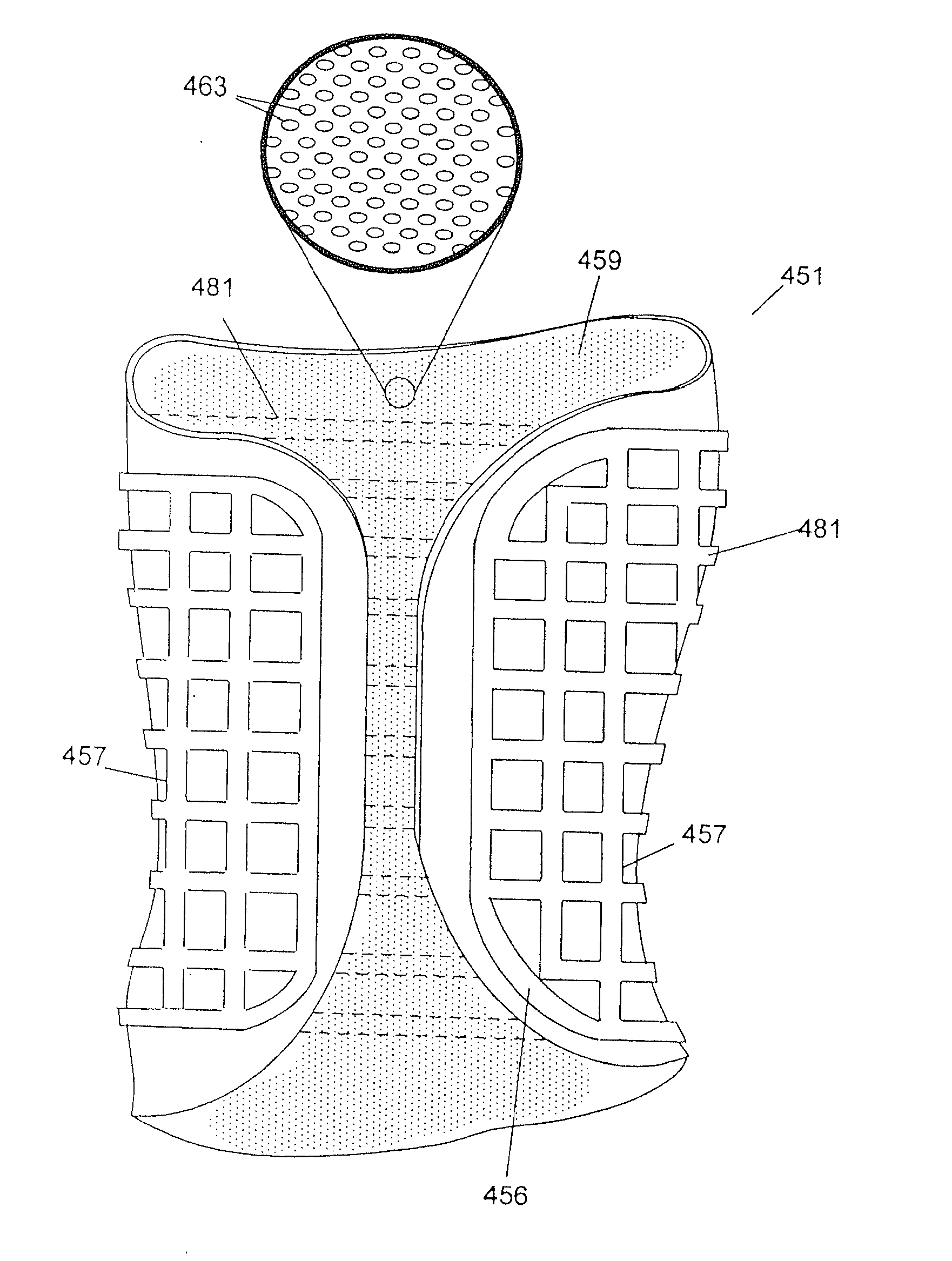Custom braces, casts and devices having fenestrations and methods for designing and fabricating
- Summary
- Abstract
- Description
- Claims
- Application Information
AI Technical Summary
Benefits of technology
Problems solved by technology
Method used
Image
Examples
Embodiment Construction
[0059]The present invention is a custom designed a cast, a brace or another device having a surface that corresponds closely to a body. The cast or brace has an inner surface that corresponds closely to the patient's body and may also have an integrated construction. The inventive cast or brace is directed towards injured backs, legs and arms or other body parts. The cast or brace is preferably designed by an industrial designer using a Computer Aided Design (CAD) computer program. The mechanical data for a patient can be obtained from photographs of the patient's body. This body data is then digitized and input into a CAD program that is referenced to design the cast or brace. An example of a suitable CAD program is Pro / Engineer by Parametric Technology Corporation. Other CAD software includes: SolidWorks by SolidWorks Corporation a subsidiary of Dassault Systemes, S. A. For simplicity, the inventive custom brace, cast or device will be described as a back brace, however the same p...
PUM
 Login to View More
Login to View More Abstract
Description
Claims
Application Information
 Login to View More
Login to View More - R&D
- Intellectual Property
- Life Sciences
- Materials
- Tech Scout
- Unparalleled Data Quality
- Higher Quality Content
- 60% Fewer Hallucinations
Browse by: Latest US Patents, China's latest patents, Technical Efficacy Thesaurus, Application Domain, Technology Topic, Popular Technical Reports.
© 2025 PatSnap. All rights reserved.Legal|Privacy policy|Modern Slavery Act Transparency Statement|Sitemap|About US| Contact US: help@patsnap.com



